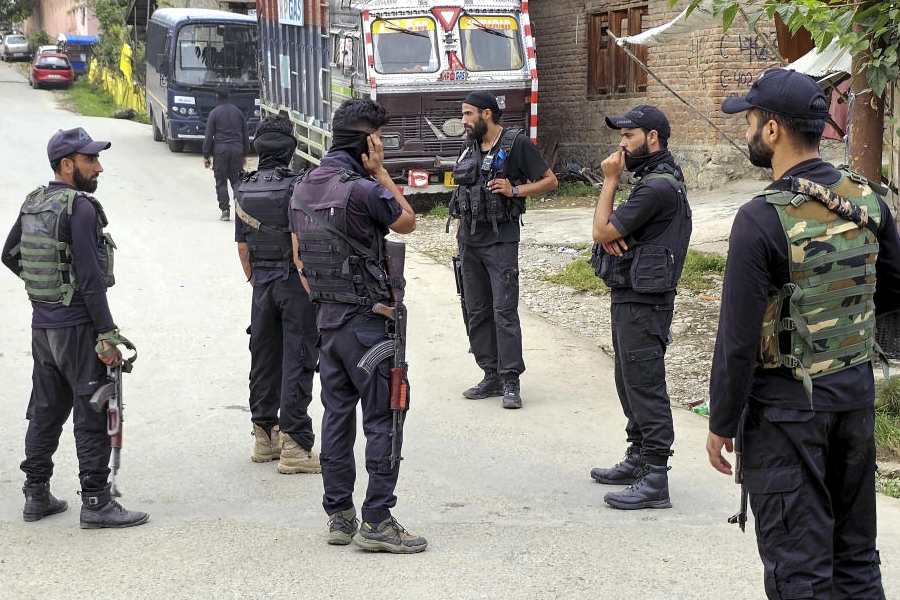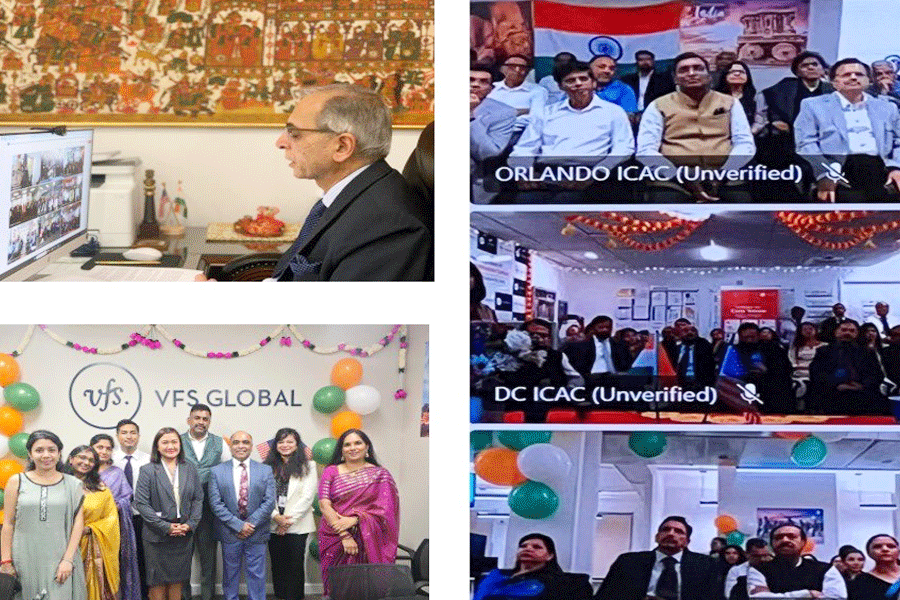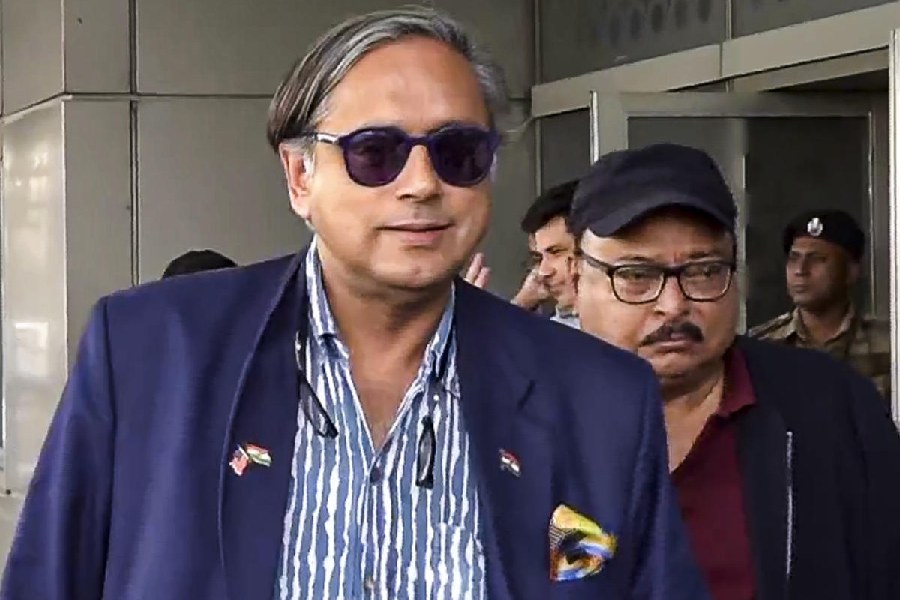|
|
For some reason, the relationship rules between trucks and private cars are completely different on the highways heading north out of Delhi from those on the ones heading south. Going north, it’s simple: the trucks all sit on the right lane, the one that’s supposed to be the ‘fast’ or ‘overtaking’ lane, and the cars zip past them in the ‘slow’ left lane, on the trucks’ blind side. As you approach each truck you flash your lights and honk, and, unless the behemoth is launching a slick overtake manoeuvre of its own at that very moment, the assistant usually waves you on. Going south towards Rajasthan it all changes. Here, the same trucks drive in a chequerboard pattern, one big guy on the right, with the next one a little ahead but on the left, the next one again on the right, and so on. This pattern gives the little private car owner the thrill of deploying his power-steering along with the headlight-dipper and horn but, generally, it works fine, allowing everyone to burn vast amounts of petrol in peaceful co-existence. It’s a typical Indian sauda with modernity and it becomes more spectacular when the NH8 spreads out in Haryana into the still new eight-laner that takes you all the way to Jaipur and beyond. The chequerboard formation still rules but now it’s spread over four lanes and no one seems to particularly mind if the little Marutis, Hyundais and Indicas weave through like fat babies dancing through stationery adults. The only time you’ll hear the bray of a truck klaxon is when some idiot private or taxi wannabe-Schumi rips into the far left lane without looking ahead properly, bringing immediate risk and creating unnecessary tension in this drivers’ heaven.
After a while, you get long stretches of road where the truck population thins out and you can fool yourself that you’re somewhere foreign and developed. A square truck-dot appears a long way away, comes closer and is left behind with a small slap of sound. Your needle stays unmoving on a heady 130 kmph. On the speakers, the Stones are complaining about some girl they treated badly in 1966. Around you are fields of orderly agriculture, or, if the highway is curving and sloping up and down, pretty mountains that might have been imported for your viewing pleasure from South Africa or California. You slip into a pleasurable state where you are at once alert and hypnotized, at one with the superb grip of your tyres on the superb road, your hands controlling the car which controls the highway which controls the surrounding landscape.
But then Mick Jagger’s voice picks up a strange warble which is quickly transmitted to a nasty bumping under your buttocks. The car starts to pitch and roll like a small fishing boat on a choppy sea and you realize your foot has been pumping the brakes before your conscious mind has noticed the approaching roadworks. Suddenly, half the highway is torn off by dug-up earth and huge lorries are charging straight at you through a curtain of dust. Or, there is a village or small town clearly battered by the new asphalt running through it, where, even as you begin to slow down from your autobahn dream, a scooter jumps out right in front of you from an invisible cut in the divider. The guy on the scootie hasn’t seen you or heard you, and this time your brake-foot goes through the floor as you yank the steering-wheel. Scooterman hears the scream of your brakes and panics but, thankfully, he panics to the right while your car skews to the left, missing killing him by only three feet.
You make sure everything is alright, dust yourself off mentally and continue, but you drive on with a clear reminder that three feet or even less separate two or three very different Indias along these highways. As you drive past in your bubble, devouring the distances between Ajmer and Jaipur, Beawar and Ahmedabad, Udaipur and Chittor, it’s easy to cancel out that around you, not ten yards from the edge of the road, are very poor villages and towns, whole empires of entrenched scarcity which put the lie to the notion that the wide, optimistic horizon in your windshield beckons not only to you but everyone else.
*************
Coming away from Delhi, the capital of avant-garde Indian Art, when your royal progress is suddenly blocked by an endless canyon of unmoving trucks, you tell yourself to treat it as a slow installation put up for you to meditate upon. After half an hour in first gear, your feet aching from the diesel-perfumed stop-start dance, you start hating all things on wheels. After forty-five minutes and one kilometre, you crawl past the real installation: first, one mangled truck flipped upside down in a ditch and then its partner in the fatal dance, a trailer-truck being towed away, the driver’s cabin sheared horizontally into half, the driver and whoever was sitting next to him almost surely decapitated. As you move through the beautiful winter sunlight and the 130 kmph passages into truck-tangle and out again, your journey is punctuated by these wrecks, this typical contemporary Indian Art Sauvage — sculpture with road-killed steel and rubber, scattered broken glass and repeated narrative of maiming and death.
It’s when you pass the remnants of one of these fatal crashes that the looks truck-drivers and their assistants give you begin to make sense, the stares they level at irate middle-class horn-addicts trying to get past them at some traffic-knot at a small town traffic light. The looks are one thing but what is a wonder is the extreme driverly generosity these truckers show to rude and incompetent people in flashy cars who are clearly not deserving of such kindness.
It’s when you’re out of the cruise-zones and caught in a tailback that you remember the bleakness that lurks behind the beauty of the surrounding landscape: the poverty, the feudal satrapies and murderous khap panchayats, the charnel houses of black oil and burnt rubber at the truck stops just out of sight of the spanking new clover-leaf ramps. Further south and east of here, of Rajasthan and Gujarat, there also be Maobeasts but they generally keep away from the big roads. That, too, may soon change. If the Maolites won’t come to the highway the government will take these highways to them: you remember being told that there is a serious plan to tarmac over the insurgencies in the LWE (Left Wing Extremism) areas. Clearly this is yet another contemporary Indian artwork which will quote from a Western classic, in this case Baron Haussmann’s wide avenues designed to provide clear fields of cannon-fire against the future rebellious citizens of Paris.
*************
If you’re a city-dweller, you can only pass through the beauty of the countryside. At some point, after a thousand or two thousand kilometres of hobby-driving, you have to leave behind the pleasure of the open road and the beauty of the yellow mustard fields and clear blue skies, you have to savour the taste of the final, early morning alu paratha at the roadside dhaba, finish the last hot cup of tea and prepare for re-entry into your own atmosphere.
As you come closer to the city, the traffic becomes more and more ugly. The same truck-drivers who gave you elbow-room on the highway now become far more stingy with the overtake margins. The hire-cars and SUVs seem to multiply, as do the motorcycles and scooters. The eight lanes disappear into four, then into two and then into the narrow, undifferentiated industrial-suburb auto-mayhem. You find yourself manoeuvring very carefully behind the worst kind of vehicles, the psychotic state transport buses and the murder mobiles with rods or girders poking several feet out of the back with just a rag tied to the end to indicate lethal danger.
By the time you come to halt at the end of one of the dozen snaking queues for the Gurgaon toll-booth, all of the pleasure has been squeezed out of you, as if you’ve come down from a magic mushroom trip. You look around you and you realize exactly what you are and exactly why Franz Kafka had it wrong. For a while you’d entered the simulacra of a privileged, motorized human being but now you’re back to your real shape — one of a thousand cockroaches trying to crawl over each other, slide in through the mesh of the drain-hole cover and escape into the safe gutters of the city.











